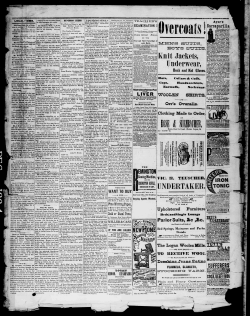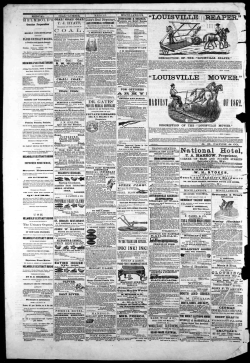
Ben Worley, Senior Regulatory Economist Network Rail King's Place
Our Ref: Your Ref: Ben Worley, Senior Regulatory Economist Network Rail King's Place 90 York Way London N1 9AG Freightliner Group Limited 3rd Floor, The Podium 1 Eversholt Street London NW1 2FL Tel: +44 (0) 44 (0) 7725 781684 Fax: +44 (0) 207 200 3975 Email: wilsoncd@freightliner.co.uk Web: www.freightliner.co.uk 4 February 2013 Dear Ben Consultation on the Coal Spillage (CSC) and the Coal Spillage Reduction Investment Charge (CSRIC) Thank you for providing the opportunity to respond to this consultation. Without prejudice this is the formal response of Freightliner Group Ltd (Freightliner), incorporating Freightliner Limited and Freightliner Heavy Haul Limited. Summary The Network Rail (NR) consultation is extremely disappointing due to the lack of evidence and flawed assumptions. There is no justification for a 122% increases in charges, particularly as NR themselves acknowledge that investment in coal sweeping equipment at terminals has reduced coal spillage Nothing presented in the document demonstrates that the costs are in addition to those not already funded through the Variable Usage Charge. NR is unable to provide evidence of where premature renewals have taken place or are required to take place, stating “the asset register does not have that level of granularity.” There is a fundamental gap between the slim evidence provided and the model used to arrive at the costs. Freightliner believes that the methodology and assumptions used by NR to be fundamentally flawed. Freightliner believes that the coal spillage charge should be discontinued as ESI coal services will already be paying a “mark-up” of £4.04 per thousand tonnes miles (KGTM) in CP5, which is based on the deemed level of affordability of the ESI coal market. Any separate coal spillage charge should be charged per tonne and not per tonne mile as only a per tonne charge would be cost reflective. The CSRIC should be discontinued and the remaining pot returned to the FOCs in the proportion that it was levied. RailInvest Funding Limited (a company registered in the Cayman Islands) is the ultimate parent company and controlling entity of RailInvest Holding Company Limited RailInvest Holding Company Limited (Reg. No. 06522978) is the UK parent company and controlling entity of RailInvest Acquisitions Limited (Reg. No. 06522985), Freightliner Group Limited (Reg. No. 05313119), Freightliner Acquisitions Limited (Reg. No. 05313136), Management Consortium Bid Limited (Reg. No. 02957951), Freightliner Limited (Reg. No. 03118392), Freightliner Heavy Haul Limited (Reg. No. 3831229), Freightliner Maintenance Limited (Reg. No. 05713164) and Freightliner Railports Limited (Reg. No. 05928006). Registered in England and Wales, Registered Office of all nine UK companies: 3rd Floor, The Podium, 1 Eversholt Street, London, NW1 2FL. Page 2 of 4 General Comments We note that CSC and CSRIC income for NR amounted to £5m in 2011/12, but Halcrow estimate costs for PR08 at £3.8m (2011/12 prices). We therefore assume that Network Rail have been over recovering these costs during CP4. Freightliner fundamentally disagrees that costs of coal spillage have increased. There are several elements that constitute our disagreement: NR have produced no historical evidence or forward looking plans at all to back up their methodology, There is a total lack of transparency regarding what assets have been replaced and whether these replacements have been prematurely brought forward because of coal spillage, We do not believe that the investment in sweeping equipment at terminals has made no difference at all to spillage levels, Coal volumes on rail will reduce in CP5 due to environmental taxes on coal use and the increases in track access charges, we do not recognise the volume assumptions used in the consultation, We do not understand why the cost of renewing a point end has increased from £435k in CP4 to £485k in CP5 when NR should have achieved 23.8% efficiencies during CP4 on renewals. We do not accept that the costs of using the rail vac have doubled, and Coal can only fall off wagons once so we do not understand how the number of loading points is relevant in calculating the costs. Therefore we would question the assumptions and methodology used by NR in arriving at its costs. On 28 June 2012 we asked NR to provide as a result of coal spillage; 1. The locations where there has been instances of brought forward renewals (plain line and S&C) in the last 10 years, 2. The plans for early renewal and their location for the next 10 years, and 3. Details of when the previous renewals took place at those locations. These questions have not been answered and no information has been provided on any specific location. At a meeting on 8 August 2012 it was stated that “the asset register does not hold that type of information.” Therefore the assumptions and methodology used to reach a cost estimate must be questionable. NR were also asked if they knew why alleged coal related point failures ‘spiked’ in 2011/12 Period 11 across the network against a falling volume. We were told that there is no information available to explain the ‘spike’ and it was said that Area Maintenance Teams do not report with a level of detail that would provide an explanation and the same teams are “not aware of the commercial (financial) incentive to NR for reporting point failures as ‘caused by coal spillage’.” We would draw your attention to a letter received from Richard Iggulden, Programme Development Manager dated 6th June, (copy attached) concerning the CSRIC and the installation wagon cleaning equipment at loading points. Whilst it would be difficult to extrapolate his observations and view across the whole network it does illustrate that the measures taken are having a positive effect on reducing coal spillage and reducing point failures. Page 3 of 4 In our view overall set against a declining traffic volume and an investment programme to reduce spillage the problem is reducing. Therefore the costs should be declining not increasing. We note an apparent error in the calculations. In respect of CP4 costs e.g. for use of Rail Vac, are outturn costs based on the coal volumes each year in CP4. The per wagon rate, for these costs, would need to be divided by CP4 volumes. Instead they appear to be divided by CP5 forecasts. As CP5 volumes are expected to be lower, this will overstate the per wagon rate." Consultation Questions Q1: What is your view on potentially recovering coal spillage costs through any new freightspecific charge, rather than a separate CSC? The Freight-Specific Charge (FSC) is being introduced to ensure the ESI Coal market segment pays for the costs it imposes on the network; it has been calculated on the basis of what additional charges the ESI coal market can bear. Such an assessment of affordability has not taken into account any increases in the CSC. Freightliner would like to understand how the costs for coal spillage are separately accounted for in the calculation of Network Rail’s variable costs. As the same people will be used on the ground to maintain the track it is unclear how any costs to clear coal spillage are additional. If the ORR does decide to charge additionally for coal spillage over and above the FSC then the CSC should be charged on a tonnes lifted basis, not per kgtm. Coal is only spilled once from a wagon (usually at the first set of points), there is no additional spillage. To continue to charge per kgtm is totally in juxtaposition to the ORR’s direction of travel on costs reflectivity. Therefore any additional charges must not be incorporated in the FSC. We agree that the CSC should be recovered separately for market segments (industrial coal) that are not subject to the FSC and this charge should be levied on per tonne lifted (not kgtm). Q2: What is your view on the methodology and assumptions that have applied in order to initially estimate coal spillage costs? The NR cost estimate for CP5 is 3 times higher than the Halcrow estimate. This very substantial difference causes us to believe that the methodology and assumptions used by NR to be highly suspect and no evidence of actual historic cost has been provided. Q3: Do you have any comments on our initial list of coal loading and unloading points set out in Annex B? Didcot (included in the list) and Cockenzie (not included in the list) Power Stations are closing prior to the commencement of CP5 and we hope that the NR coal forecasts (see also later comment in response to Q9) reflect the reduction in volume from their respective supply points. Chalmerston sees only infrequent rail traffic and should be excluded. Widdrington is mothballed and should be excluded. Q4: What is your view on our proposal to discontinue the CSRIC in CP5? We agree that the CSRIC should be discontinued and any money remaining in the pot should be refunded to the FOCs in the proportion at which it was levied. Page 4 of 4 Q5: What is your view on the appropriate size of an annual investment fund assuming that it was considered appropriate to retain the CSRIC in CP5? See answer to Q4. Q6: What is your view on how we have initially estimated the CP5 CSC rate? See answer to Q2. The statement on Page 17 in support of Table 6 is a contradiction. Network Rail is stating that the cost of coal spillage is increasing but traffic is forecast to decline. If point failures, for example broadly follow the trend in traffic volumes (Page 19) then this statement does stand up to scrutiny. Costs will decline with the decline in volume. In very simple terms ‘less trains = less spillage.’ Q7: What is your view on our proposal to cease adjusting the CSC rate annually in CP5 based on the number of coal related points failures? The reward for the investment in coal sweeping equipment appears to be a 122% increase in the charges raised. The annual review for the CSC during CP4 has not been executed particularly well with poor data provision, and reliance and data that FOCs are unable to verify. There is clearly has been no incentive for improving behaviours we see little point in continuing the annual review mechanism. Q8: What is your review on our proposal that if the CSRIC were to be levied in CP5 there would be considerable merit in setting the level of the charge for the duration of the control period? We do not believe there is any justification in continuing to levy the CSRIC but if NR and ORR determine that is should continue it must be fixed for the whole Control Period. Q9: Do you have any other comments? We do not recognise the figures in the NR coal volume forecast (Figure 1, page 17 of the consultation document). NR must explain how they have reached these forecasts and we would expect the calculations to be checked to ensure consistency with the industry agreed forecasts. Freightliner is happy for this response to be published on your website and is happy to discuss the issues in more detail should you wish to do so. Yours sincerely Chris Wilson Rail Strategy Manager Freightliner Group Limited
© Copyright 2025





















